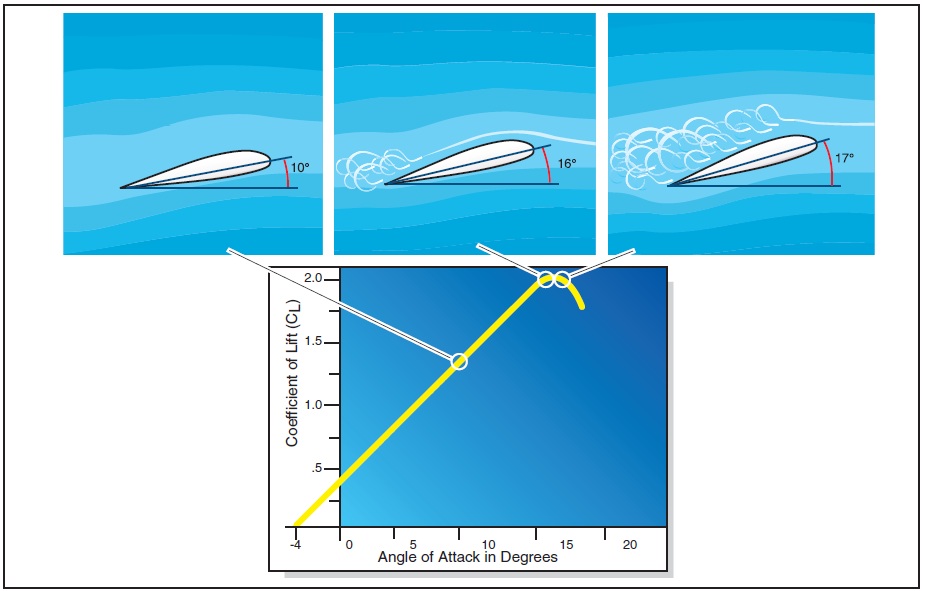
Chapter 4—Slow Flight, Stalls, and Spins
Table of Contents
Introduction
Slow Flight
Flight at Less than Cruise Airspeeds
Flight at Minimum Controllable Airspeed
Stalls
Recognition of Stalls
Fundamentals of Stall Recovery
Use of Ailerons/Rudder in Stall Recovery
Stall Characteristics
Approaches to Stalls (Imminent Stalls)—Power-On or Power-Off
Full Stalls Power-Off
Full Stalls Power-On
Secondary Stall
Accelerated Stalls
Cross-Control Stall
Elevator Trim Stall
Spins
Spin Procedures
Entry Phase
Incipient Phase
Developed Phase
Recovery Phase
Intentional Spins
Weight and Balance Requirements

STALLS
A stall occurs when the smooth airflow over the airplane’s wing is disrupted, and the lift degenerates rapidly. This is caused when the wing exceeds its critical angle of attack. This can occur at any airspeed, in any attitude, with any power setting. [Figure 4-2]

Figure 4-2. Critical angle of attack and stall.
The practice of stall recovery and the development of awareness of stalls are of primary importance in pilot training. The objectives in performing intentional stalls are to familiarize the pilot with the conditions that produce stalls, to assist in recognizing an approaching stall, and to develop the habit of taking prompt preventive or corrective action.
Intentional stalls should be performed at an altitude that will provide adequate height above the ground for recovery and return to normal level flight. Though it depends on the degree to which a stall has progressed, most stalls require some loss of altitude during recovery. The longer it takes to recognize the approaching stall, the more complete the stall is likely to become, and the greater the loss of altitude to be expected.
PED Publication